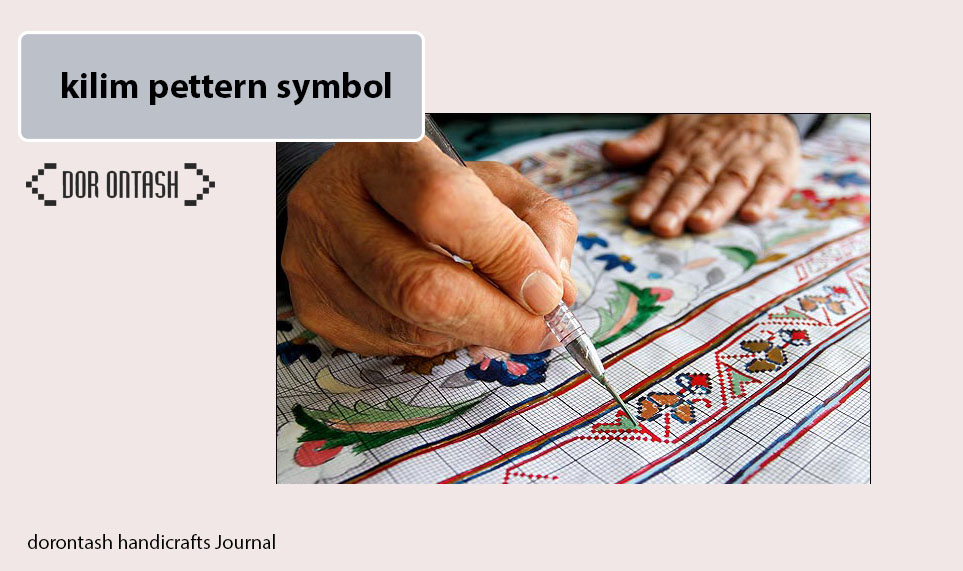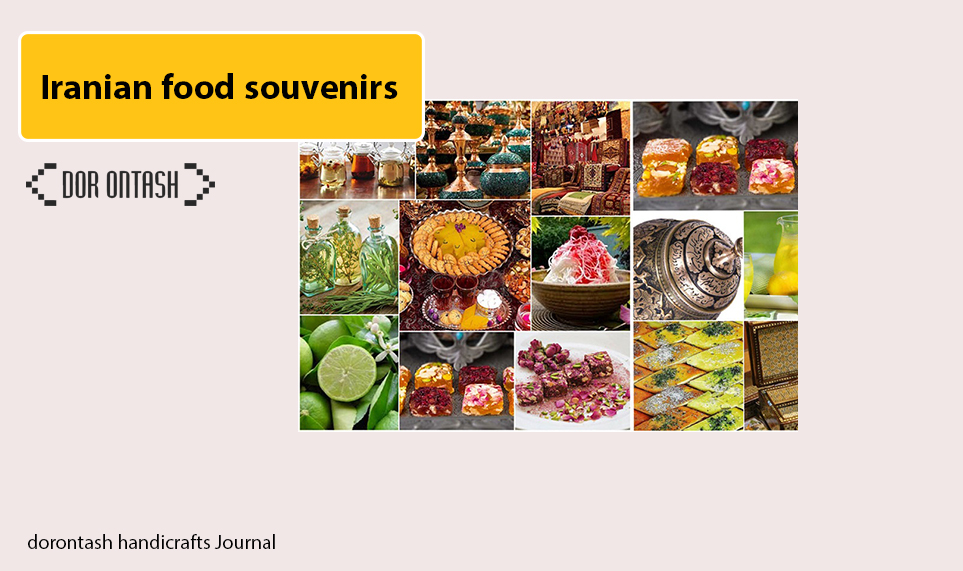Galim is a type of carpet with a simple texture that is woven with wool and cotton and in some cases with wool and goat hair. Threads of taropod pass under and over each other. iran kilim weaving is Like the simple weaving of a basket. Carpet as a women’s craft is popular in nomadic and rural areas 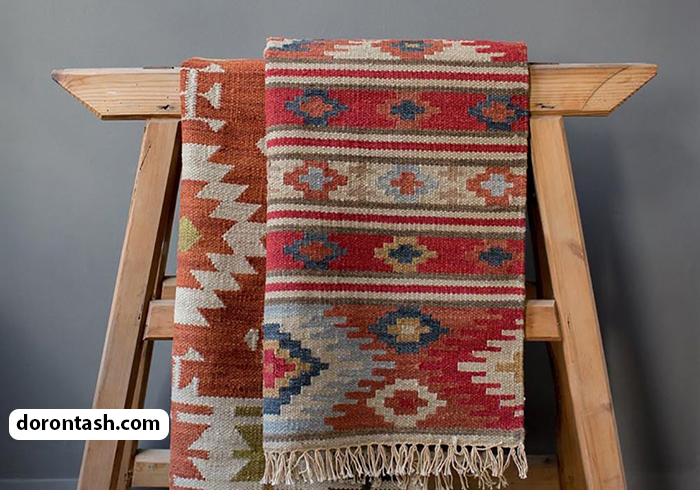 of Iran.
of Iran.
:History of the iran kilim weaving
Carpet is one of the oldest rugs of mankind and perhaps the first rug for primitive people because it shows the history of weaving from prehistoric times up to about six thousand years BC, which indicates the spinning and transformation of wool fibers into yarn.
In Iran, the first signs of the existence of fabric date back to 4,000 BC. They were obtained from the excavations carried out in Susa. The history of carpets is also related to the same period, because around 6,000 to 8,000 BC, animal husbandry was practiced in Egypt and Central Asia. China, India, upside-down became popular and sheepskin was used as top and bottom for zilo. Nothing has passed since this era when dynamic and productive man started spinning and weaving wool.
The rug was first used as a kind of undersize and at the same time as an upper garment, and according to the common kilim weaving looms among the nomads and comparing it with the weaving machines that are still used in rural areas, due to the more advanced machines Simple weaving compared to the past, it can be inferred that the beginning of kilim weaving was before the appearance of woven fabric, and it is assumed that both industries are derived from the natural spectrum of weaving and had an earlier appearance.
At the beginning, the rug was used as a means to protect the body from the cold. And still among some tribes living in Afghanistan, the tribe members put a kind of 100% woolen rug on their shoulders and while resting or sleeping. The same carpet is used as a top. With the gradual development and popularization of weaving and weaving of various fabrics, the carpet gained its position.
Simple basic rugs were prepared without patterns and with the color of the wool itself, but over time, the diverse tastes of people, seeing the different colors of the wools, led to the creation of a variety of shapes in the rugs, and this itself became the basis for dyeing and creating patterns in the rugs, of course. Still in Eilat, Qashqai region, rugs with natural color are woven due to the color of the wool and originated from the nature and nature of the weaver.
The oldest piece of carpet in the world is the remnants of a carpet found in the Anatolian island and it belongs to six thousand years BC, and it is the oldest Iranian carpet that belongs to three thousand years BC and in the western region of Iran. The carpet has a simple texture and is made of warp and weft threads that pass under and over each other, as if the Iranians learned this texture from the Chinese people and made changes to it according to their taste and desire.
Familiarity with iran kilim weaving tools and equipment:
have:
The most important tool is the handmade kilim weaver. The frame on which the carpet is woven is of two types.
1- vertical or standing
2- horizontal or lying down
The lying horizontal loom is mostly used in the nomadic areas of our country, the nomads use horizontal looms that are easily portable due to their nomadic nature and constant movement. They are fixed and non-moving, they usually use vertical fences. However, in many rural areas of the country, horizontal fences are common. In some nomadic areas, including East Azerbaijan, vertical fences are used.
 Daftin or Defe
Daftin or Defe
In order to strengthen the interlacing of carpet fibers and the weft, a device called daftin is usually used, and after passing each horizontal weft between the vertical threads, the weaver uses it to strike the woven part until the interlacing of weft and weft. and the weaving process takes place. The type of daftin used is usually iron and it consists of seven to ten thin iron blades with a width of two and a length of twenty centimeters. In some areas of our country, especially in the villages of Kermanshah province, they are used to create small patterns. Also, the pattern of the rug’s border is made of a wooden or metal tool called souk, which has a different shape and size.
scissor
kilim weaving scissors are similar to kilim weaving scissors in terms of construction and operation, and consist of two blades that are connected by rivets and screws and are opened and closed around an area. iran handicrafts
kilim weaving steps
The first stage of kilim weaving is the weaving. For this purpose, after selecting the dar, first, two strings of rope are tied parallel to the dar of the carpet weaving machine with desired distances, which is used in the term of chelehkesi as stringed, then the head of cotton thread which has the desired delicacy or thickness and it used to be tied in the form of a ball on the right or left side of the thread, then the ball of thread is passed through the back of the first string and in front of the second string, and it is taken from the head to the back and from They take out the gallows
After drawing, it’s time to close the kajawir. Kajawir is sometimes called Kajucho and Koji. It is a cylindrical piece of wood with a diameter of approximately four centimeters and a length equal to the nominal width of the woven kilim
Chain weaving is done before kilim weaving and allows the weaver to weave faster.
After the end of wefting, it is necessary to make an arrangement so that the spun wefts remain fixed in place because during weaving, due to the fact that to create density in the weave and further compression of the wefts, an impact is made on the woven part, and usually based on the design of strokes. Daftin is only applied to a few threads and it will cause problems, but to prevent these problems, some cotton thread of the same grade as the threads of thread in such a way that it covers the entire surface of the thread is called thread.
In recent years, other methods have become common, where some glue is applied on the chelas so that the chelas cannot move, and in this regard, 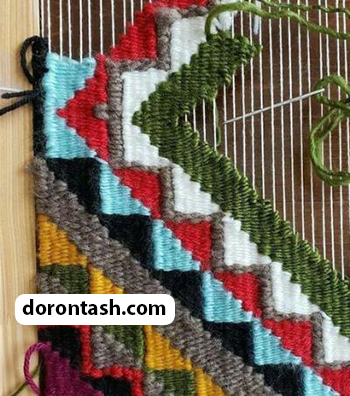 another method can be applied.
another method can be applied.
Types of kilim
The rug is woven in three ways:
Simple woven rug: In this type of rug, the wefts pass one by one through the warp. This carpet is a rug, and for its weaving, a pre-prepared map is usually not used. Patterns of simple woven rugs are generally geometric and rarely curved patterns are seen in this type of rug. Sometimes, patterns are created on rugs with a simple background using colored wool fibers, which are often geometric.
Embossed carpet: This type of carpet has a simple background, but the main design is like a tufted carpet. In such a way that it is tied from the carpet pattern on the rug and at the end the extra pile is arranged.
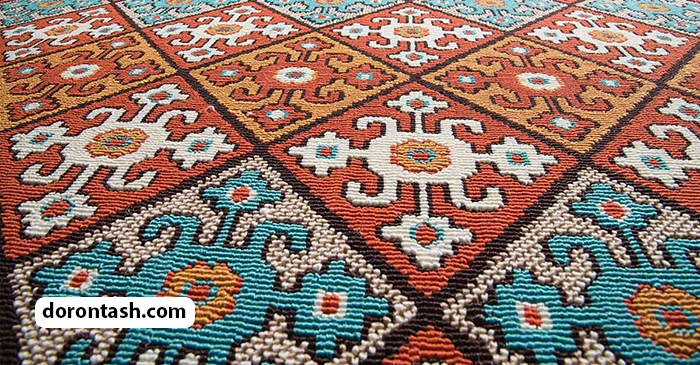 Verni: Verni is a rug without piles and one side, which is generally “woven without a plan and mentally by nomadic girls and women of Moghan, Arsbaran and Meshkin areas of the city. This type of carpet is woven in Kurdistan and Kerman with a different design and pattern, which is called “Shiriki Pich” in Kerman. Iran’s best varnishes are produced by the Shahson or Ilson family, which has a long history in this field, so that the word Varni has always been associated with the name of Shahson.
Verni: Verni is a rug without piles and one side, which is generally “woven without a plan and mentally by nomadic girls and women of Moghan, Arsbaran and Meshkin areas of the city. This type of carpet is woven in Kurdistan and Kerman with a different design and pattern, which is called “Shiriki Pich” in Kerman. Iran’s best varnishes are produced by the Shahson or Ilson family, which has a long history in this field, so that the word Varni has always been associated with the name of Shahson.
In general, in terms of texture, Iranian rugs are woven in two ways:
1- wefting method: in this method, only warp thread (chele) and weft thread are used to weave the rug. They pass the warp, the patterns appear by changing the colors of the weft, and both carpets become smooth, uniform and the same color.
2- Twisted weft method: in this method, in addition to warp thread and weft thread, thin weft is also used in the weave, and in fact, the weft is twisted through the warp threads, then by passing the thin weft and beating it with a comb, The act of interweaving the warp and weft threads becomes final. This method of weaving, which many experts consider to be intermediate between carpet weaving and kilim weaving, is actually the last stage of the evolution of carpet weaving into kilim weaving. The weaving of the carpet known as Verni in East Azerbaijan and the weaving of the kilim known as Shiriki Pitch in Kerman province is like this.
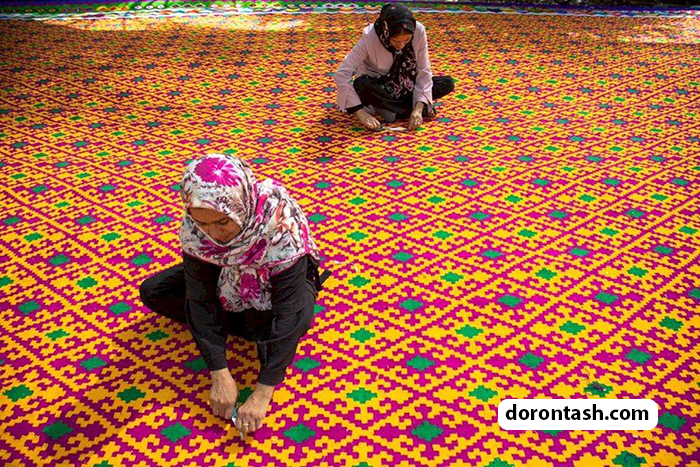 These types of rugs, which are woven in a twist pattern, are called sumac. Sometimes, the rugs are embroidered with a needle, these rugs are known as needle rugs . iran kilim weaving
These types of rugs, which are woven in a twist pattern, are called sumac. Sometimes, the rugs are embroidered with a needle, these rugs are known as needle rugs . iran kilim weaving

